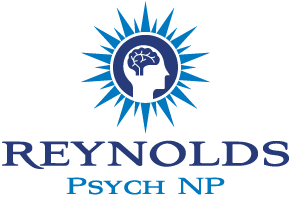If you’ve ever felt an overwhelming surge of fear, tightness in your chest, or the sensation that something is terribly wrong, you may have experienced either a panic attack or an anxiety attack. Though the terms are often used interchangeably, they are distinct phenomena with different causes, symptoms, and treatments. Understanding the difference between a panic attack and an anxiety attack is crucial for managing these experiences and seeking the appropriate help when needed.
What is a Panic Attack?
A panic attack is a sudden, intense episode of fear or discomfort that peaks within minutes. It is often unpredictable and can occur without any apparent trigger. Panic attacks are part of a larger condition known as panic disorder, though they can also happen in other anxiety-related conditions.
The key feature of a panic attack is the intensity and abrupt onset of symptoms. Symptoms usually peak within 10 minutes and can last up to 30 minutes, although the experience may feel much longer. Common symptoms of a panic attack include:
- Rapid heart rate or palpitations
- Shortness of breath
- Chest pain or discomfort
- Dizziness or lightheadedness
- Nausea
- Sweating
- Shaking or trembling
- A feeling of choking or being unable to breathe
- Fear of losing control or “going crazy”
- A fear of dying
One of the most troubling aspects of panic attacks is the fear of future attacks. People who experience panic attacks often live in fear of when the next one will happen, leading to avoidance behaviors and a diminished quality of life. If panic attacks occur frequently, they can contribute to the development of panic disorder, which may require professional treatment.
What is an Anxiety Attack?
An anxiety attack, unlike a panic attack, does not have a specific clinical definition and is not officially recognized in diagnostic manuals like the DSM-5 (Diagnostic and Statistical Manual of Mental Disorders). However, many people use the term to describe episodes of heightened anxiety or distress related to specific worries or stressors.
An anxiety attack typically builds gradually and is often linked to a particular stressor or situation, such as a presentation, social event, or an ongoing concern about work or relationships. While the symptoms of an anxiety attack can feel overwhelming, they are usually less intense and shorter-lived than those of a panic attack. Common symptoms include:
- Restlessness or feeling on edge
- Increased heart rate
- Muscle tension
- Fatigue
- Trouble concentrating
- Irritability
- Difficulty sleeping
Anxiety attacks tend to be less physically intense but can still cause significant distress. They may last for a prolonged period—minutes, hours, or even days—especially if the underlying stressor remains unresolved. While the experience of an anxiety attack can be uncomfortable, it is often more connected to situational stress than the overwhelming, sudden fear experienced during a panic attack.
Key Differences Between Panic Attacks and Anxiety Attacks
- Onset: Panic attacks come on suddenly and without warning, whereas anxiety attacks tend to develop more gradually and are often linked to a specific worry or stressor.
- Intensity: Panic attacks are intense and overwhelming, reaching their peak quickly, while anxiety attacks tend to be less severe, though they can still be distressing.
- Duration: Panic attacks typically last 20-30 minutes, while anxiety attacks may persist for a longer period, depending on the underlying cause.
- Physical Symptoms: Both panic and anxiety attacks can include physical symptoms like a rapid heartbeat, shortness of breath, and dizziness, but the physical symptoms of panic attacks are usually more extreme.
- Triggers: Panic attacks often occur without warning and may not have an identifiable trigger, while anxiety attacks are generally linked to ongoing concerns or stress.
How to Manage Panic and Anxiety Attacks
If you’re experiencing panic or anxiety attacks, there are several ways to manage the symptoms:
- Breathing exercises: Deep breathing or controlled breathing techniques can help calm the nervous system during an attack.
- Grounding techniques: Focusing on your surroundings and grounding yourself in the present moment can be especially helpful during a panic attack.
- Cognitive-behavioral therapy (CBT): CBT is an evidence-based therapy that helps people identify and challenge irrational thoughts and develop healthier coping strategies.
- Medications: For some individuals, medications such as SSRIs (selective serotonin reuptake inhibitors) or benzodiazepines may be prescribed to manage symptoms, particularly for panic disorder or generalized anxiety disorder.
- Lifestyle changes: Regular exercise, a balanced diet, and sufficient sleep can help reduce the overall levels of anxiety and stress.
Takeaway
Understanding the differences between panic attacks and anxiety attacks is essential for managing these experiences and seeking the right help. While panic attacks are intense and often occur without warning, anxiety attacks are typically tied to specific stressors and build gradually. Both types of attacks can cause significant distress, but with the right coping strategies and treatment, individuals can manage their symptoms and improve their quality of life. If you are experiencing panic or anxiety attacks, seeking professional help can provide you with the tools and support necessary to regain control.







